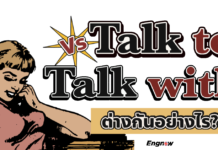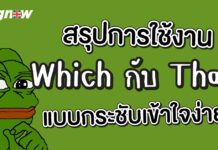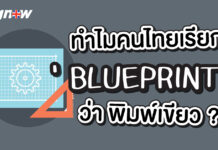เราเคยเรียนรู้เกี่ยวกับเรื่อง Adjective กันไปแล้ว ทีนี้มาต่อกันในเรื่องของการแบ่งหมวดหมู่ของคำคุณศัพท์ ที่มีทั้งคุณศัพท์แสดงความเป็นเจ้าของ คุณศัพท์ชี้เฉพาะ คุณศัพท์ที่ใช้บอกจำนวน/ปริมาณ หรือคุณศัพท์บอกจำนวนแน่นอนและอื่นๆ นั้นจะมีหลักการเอามาใช้อย่างไรบ้าง
Classified by meaning
- Possessive Adjective คุณศัพท์แสดงความเป็นเจ้าของ ดังนั้นจะต้องตามด้วยคำนามหรือคำสรรพนามเสมอ เช่น
| Possessive Adjective | Possessive pronoun |
| My | Mine |
| Our | Ours |
| Your | Yours |
| His | His |
| Her | Her |
| It | Its |
| Their | Theirs |
เช่น This is my book. นี่คือหนังสือของฉัน
He is my boyfriend. เขาคือแฟนของฉัน
** อย่าสับสนกับเรื่อง Possessive Pronoun ซึ่ง Possessive Pronoun สามารถใช้แทน noun ได้เลย แต่ Possessive Adjective ต้องมี noun หรือ pronoun ในประโยคด้วย
2. Demonstrative Adjective คุณศัพท์ชี้เฉพาะ คือ คำที่ใช้ชี้เฉพาะของคำนามนั้น
This, That, These, Those, such, only
เช่น This is my home. นี่คือบ้านของฉัน
These bags are too expensive. กระเป๋าเหล่านี้ราคาแพงเกินไป
3. Indefinite adjective คำคุณศัพท์ที่ใช้บอกจำนวน/ปริมาณ ใช้กับคำนามที่นับได้และนับไม่ได้ แต่ก็สามารถบอกออกมาเป็นตัวเลขได้อย่างแน่นอน เช่น
all, some, any, every, few (น้อย ใช้กับคำนามนับได้), little (น้อย ใช้กับคำนามนับไม่ได้), many/several (มาก ใช้กับคำนามนับได้), a lot of, half, most
4. Numeral Adjective คุณศัพท์บอกจำนวนแน่นอน คือ คำที่ใช้บอกจำนวนที่แน่นอนของคำนามนั้น (อาจแบ่งได้เป็นการบอกจำนวน การบอกลำดับ และการบอกจำนวนเท่า)
4.1 Ordinal number : ตัวเลขนับปกติ เช่น one, two, three…
- 9,999 = nine thousand nine hundred and ninety-nine
- 99,999 = ninety nine thousand nine hundred and ninety-nine
- 100,000 = one hundred thousand
- 999,999 = nine hundred and ninety-nine thousand nine hundred and ninety-nine
- 1,000,000 = one million
4.2 Ordinal number : ตัวเลขแสดงลำดับ เช่น First, second, third…
หมายเหตุ Ordinal number + th = Ordinal number
ยกเว้น First, second, third เช่น
- 4 = fourth
- 5 = fifth
- 12 = twelfth
- 20 = twentieth
- 21 = twenty first
- 29 = twenty ninth
5. Quantitative Adjective คุณศัพท์บอกปริมาณ คือ คำที่ใช้บอกปริมาณของคำนามนั้น ว่ามีจำนวนแค่ไหน มากหรือน้อย
5.1 Many, Much
Many หมายถึง มาก ใช้กับคำนามนับได้ เช่น I have many books. ฉันมีหนังสือจำนวนมาก
Much หมายถึง มาก ใช้กับคำนามนับไม่ได้ เช่น I have much money. ฉันมีเงินมาก
5.2 a (great) number of + countable noun
a (great) amount of + uncountable noun
a (great) deal of + uncountable noun
a (great) quantity of + uncountable noun
สามารถละคำว่า great ได้ แล้วใช้ synonym แทน great เช่น big, large, vast, huge, enormous
5.3 a lot of + countable noun/uncountable noun
lots of + countable noun/uncountable noun
plenty of + countable noun/uncountable noun
5.4 few/a few หมายถึง น้อย ใช้กับคำนามนับได้
little/a little หมายถึง น้อย ใช้กับคำนามนับไม่ได้
เช่น After shopping, I have little money left, I can’t lend you any. หลังจากชอปปิ้ง ฉันก็มีเงินเหลือน้อยมาก ฉันไม่สามารถให้เธอยืมได้หรอก
After shopping, I have a little money left, I can lend you some. หลังจากชอปปิ้ง ฉันก็พอมีเงินเหลือเล็กน้อย ฉันสามารถให้เธอยืมได้
6. Descriptive adjective (Perfect adjective) คุณศัพท์สมบูรณ์แบบ ใช้บอกคุณลักษณะ Classified by meaning
6.1 Quality of noun บอกคุณภาพของคำนาม เช่น good, bad, beautiful, lovely, cute เป็นต้น
6.2 Size บอกขนาดของคำนาม เช่น big, large, vast ,huge, enormous, small, long
6.3 Age of noun เช่น old, young, new
6.4 temperature เช่น cold, warm
6.5 Shape of noun เช่น fat, thin, thick, round, square
6.6 colour of noun เช่น red, green, white, yellow
6.7 origin of noun เช่น Thai, America, English
7. Interrogative adjective คุณศัพท์ที่ใช้กับคำนามเพื่อสร้างประโยคคำถามในภาษาอังกฤษ มีลักษณะคล้ายกับ interrogative pronoun แต่มีความแตกต่างกันตรงที่ Interrogative adjective วางไว้ต้นประโยคและมีนามหรือคำสรรพนามตามหลังเสมอคำนาม เช่น what, which, whose
What movie are you watching. คุณดูหนังเรื่องอะไร
Whose shoes are these? รองเท้านี้เป็นของใคร












